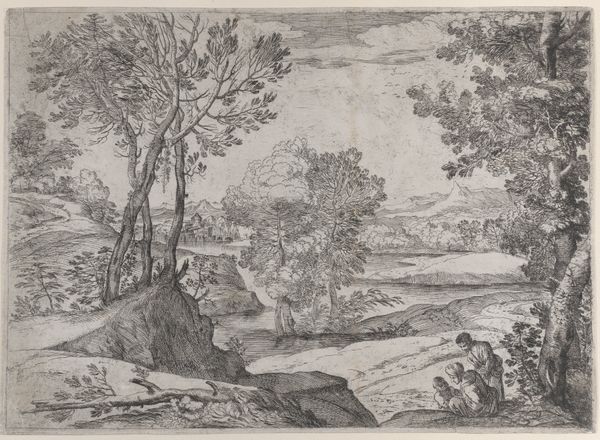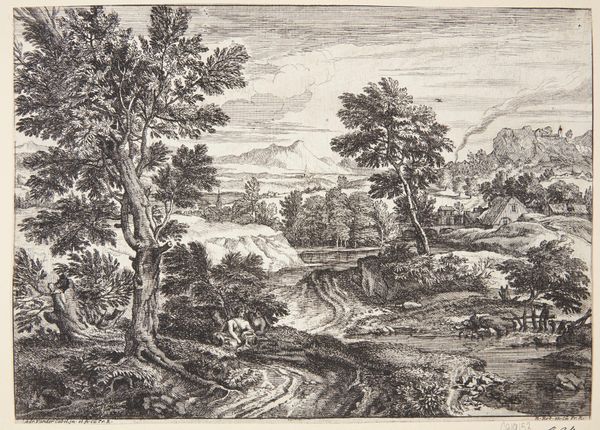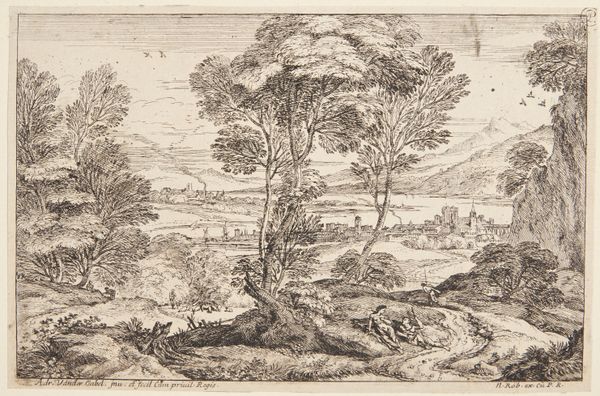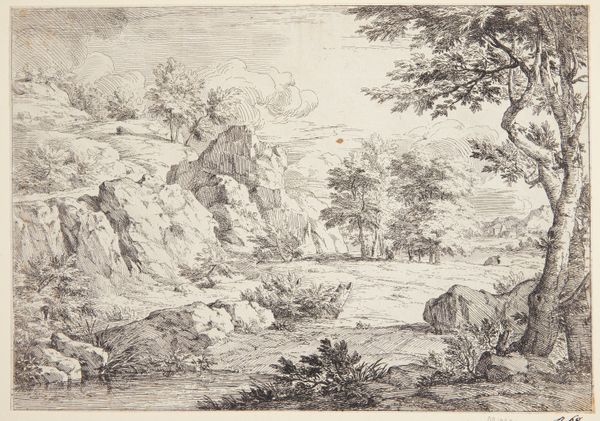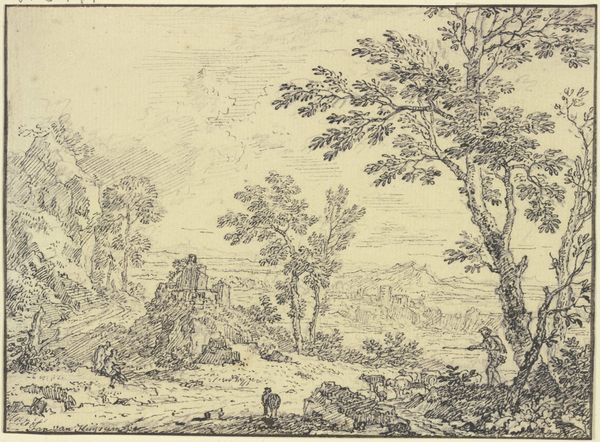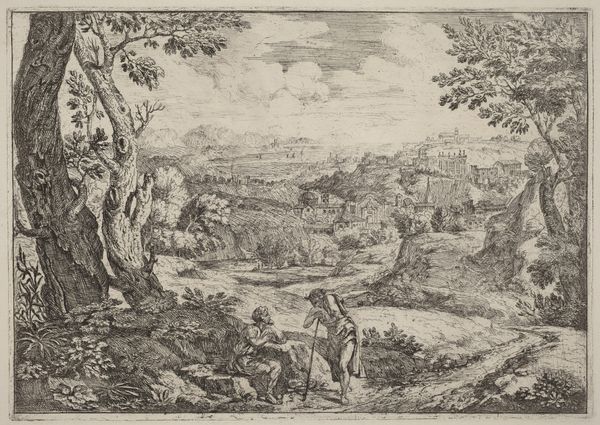
Klippefyldt landskab, i frigrunden to figurer 1640 - 1723
0:00
0:00
drawing, print, etching, paper, ink
#
drawing
#
ink drawing
#
baroque
# print
#
pen sketch
#
etching
#
pencil sketch
#
landscape
#
paper
#
ink
Dimensions: 210 mm (height) x 300 mm (width) (bladmaal)
Curator: Let’s turn our attention to this landscape by Abraham Genoels, dating sometime between 1640 and 1723. It's titled "Klippefyldt landskab, i frigrunden to figurer," a drawing rendered in ink, etched, printed on paper, and currently held at the SMK - Statens Museum for Kunst. Editor: What strikes me immediately is the solitude; despite the figures in the foreground, a palpable sense of stillness and perhaps even isolation pervades. Curator: Absolutely. The rendering leans into baroque conventions but utilizes reproducible mediums to circulate ideas around landscape as a valuable asset to the early modern eye. We see etching and ink employed to create something of a familiar vista but with a perspective only the artist could bring to bear. How do you think that informs the symbolism here? Editor: Well, landscape itself carries symbolic weight; the rugged rocks and delicate foliage suggest a divine hand at work, a deliberate act of creation. The figures, seemingly dwarfed by the scene, point toward our place within it. Their presence almost encourages reflection, the scale emphasizes the vastness of the natural world and by implication the insignificance of humankind. Curator: Insignificance perhaps, but also our industriousness. Ink, paper, printing... these speak to a distinctly human urge to reproduce, distribute, and ultimately control even that which overwhelms us. A pen sketch like this can itself travel. Etchings would've allowed Genoels to have many versions to distribute or sell as part of his artistic and economic enterprise. Editor: A counterpoint there might be drawn between that impulse toward mastery and what is truly untameable; the artist's interpretation remains subjective, framed by his own perceptions. It seems an effort toward cultural memory rather than actual physical dominion. Curator: True, but those perceived symbols had material consequences. Consider the ways wealthy patrons utilized images like these to stake symbolic claims on real estate or colonial ambition. The paper trade itself involved global material exchange. Editor: So you’re suggesting an element of…propaganda then, within the picturesque? Curator: Perhaps a tool of subtle cultural assertion. The iconography certainly carries a potent sense of idyllic entitlement for specific eyes. Editor: Interesting. It makes you see this seemingly tranquil scene through a new lens. I'm left pondering what stories those rocks and trees silently hold, now viewed as products. Curator: Exactly. We must remain alert to the social and material means behind their rendering. That's the heart of a landscape tradition.
Comments
No comments
Be the first to comment and join the conversation on the ultimate creative platform.



